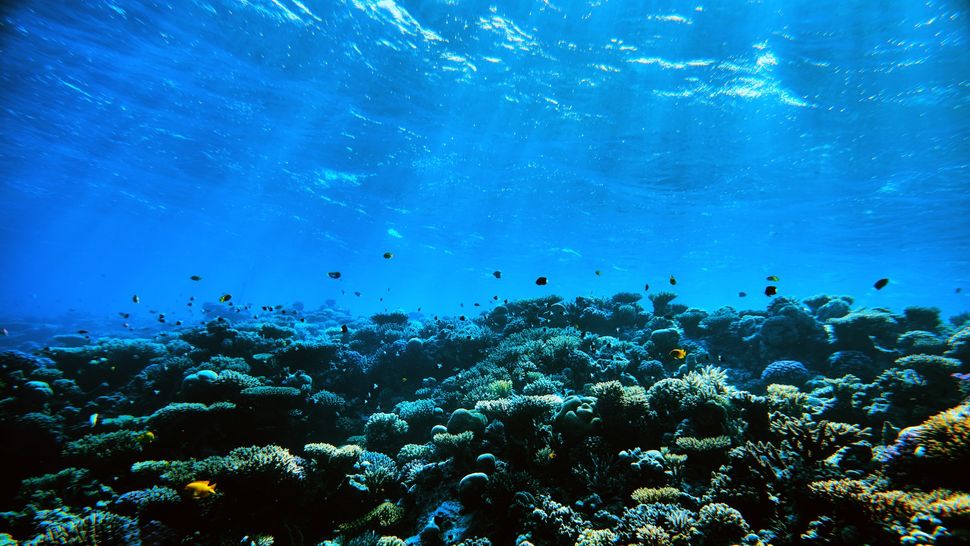There's an acidic zone 13,000 feet beneath the ocean surface -- and it's getting bigger
By Peter Townsend Harris, Mark John Costello
published August 13, 2024
The carbonate compensation depth — a zone where high pressure and low temperature creates conditions so acidic it dissolves shell and skeleton — could make up half of the global ocean by the end of the century.

An underwater photo of corals and tropical fish on the ocean floor
(Image credit: stock_colors via Getty Images)
In the deepest parts of the ocean, below 13,100 feet (4,000 metres), the combination of high pressure and low temperature creates conditions that dissolve calcium carbonate, the material marine animals use to make their shells. This zone is known as the carbonate compensation depth — and it is expanding.
This contrasts with the widely discussed ocean acidification of surface waters due to the ocean absorbing carbon dioxide from the burning of fossil fuels.
But the two are linked: because of rising concentrations of carbon dioxide in the ocean, its pH is decreasing (becoming more acidic), and the deep-sea area in which calcium carbonate dissolves is growing, from the seafloor up.
The transition zone within which calcium carbonate increasingly becomes chemically unstable and begins to dissolve is called the lysocline. Because the ocean seabed is relatively flat, even a rise of the lysocline by a few metres can rapidly lead to large under-saturated (acidic) areas.
More:
https://www.livescience.com/planet-earth/rivers-oceans/as-ocean-surfaces-acidify-a-deep-sea-acidic-zone-is-expanding-marine-habitats-are-being-squeezed
